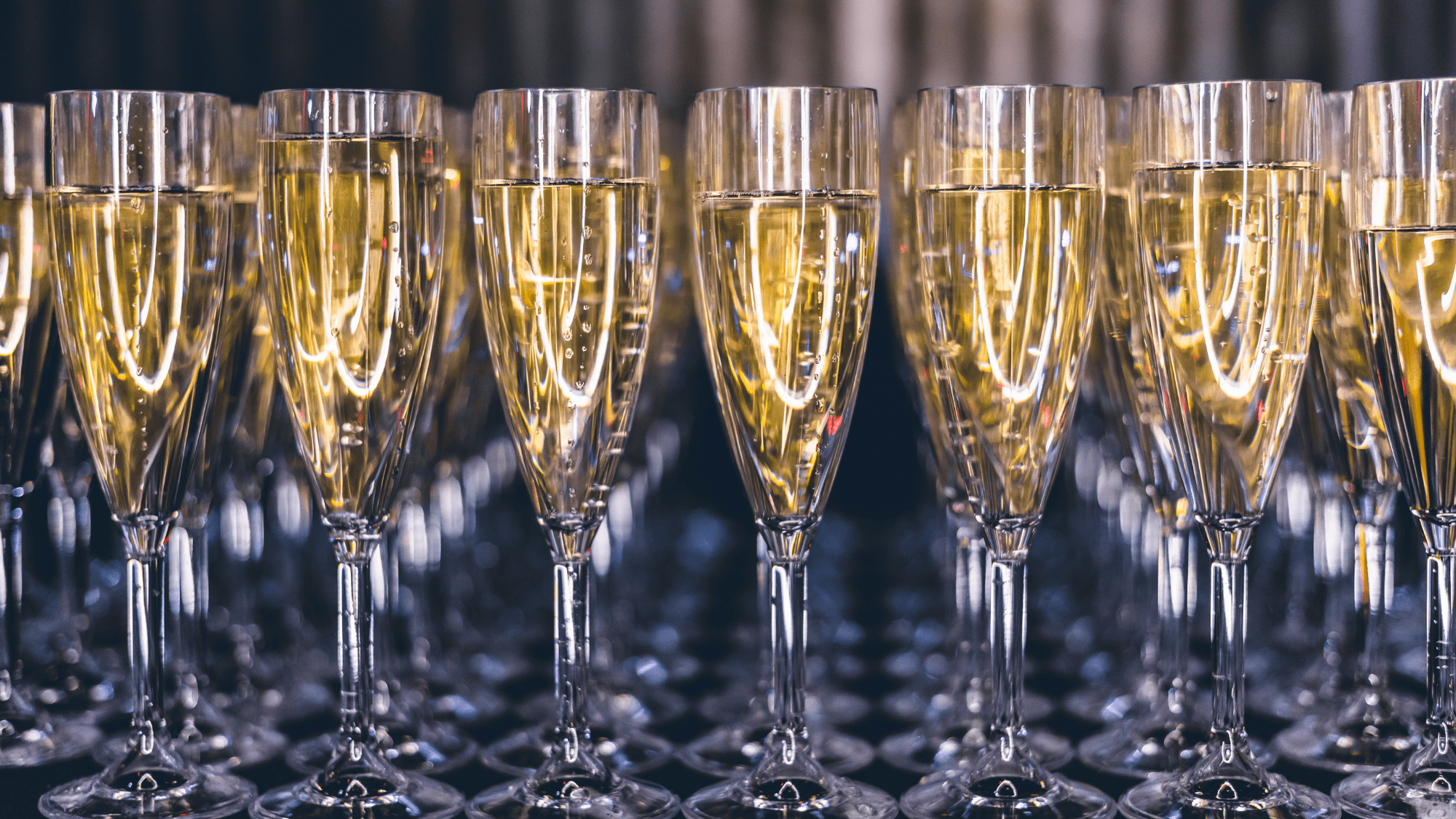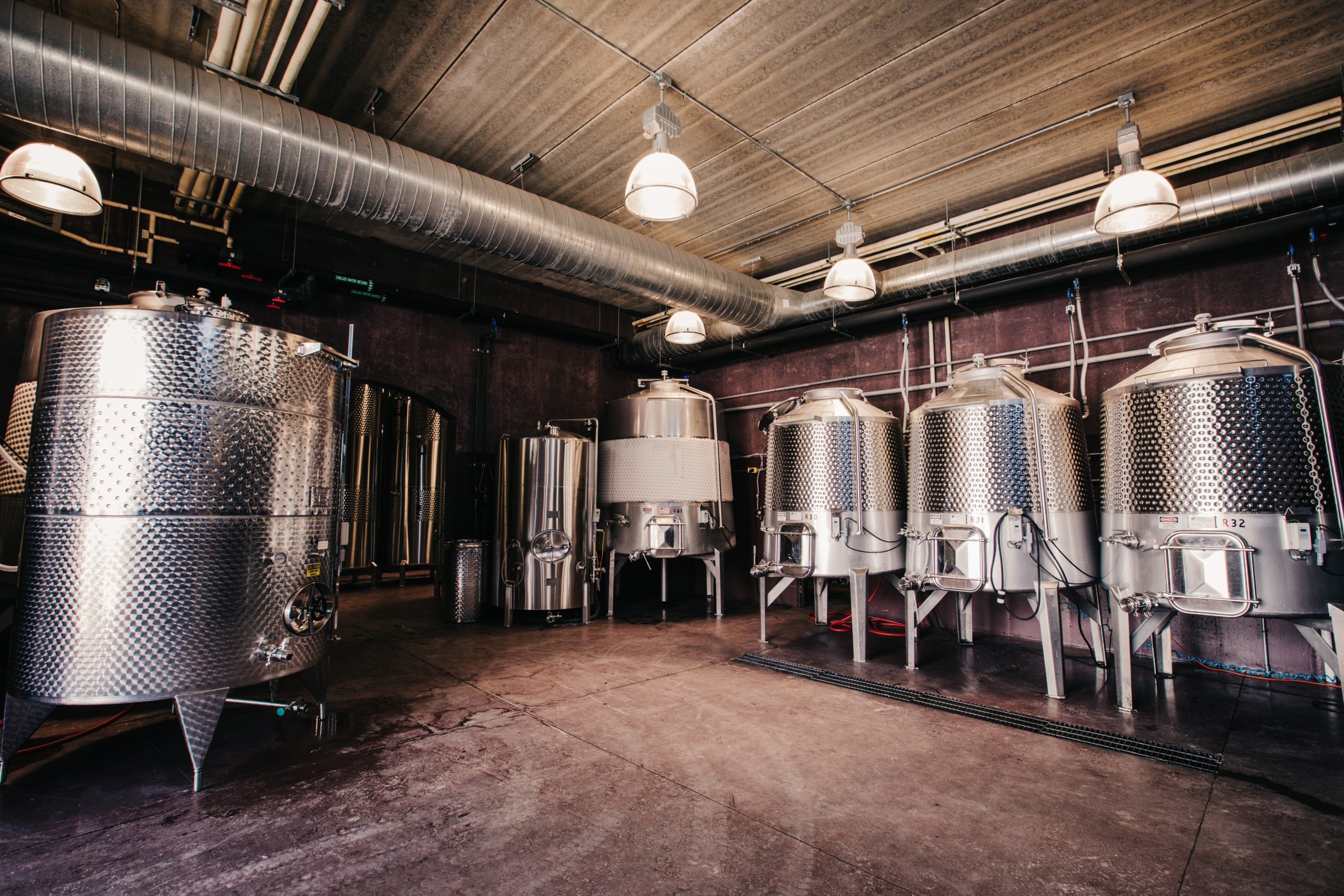When it comes to sipping on the effervescent elixir of celebration – sparkling wine – the vessel in which it’s served plays an integral role in enhancing the entire experience. From classic flutes that elegantly showcase the bubbles to modern coupes that evoke the glamor of bygone eras, the diversity of sparkling wine glasses is as enchanting as the drink itself. In this blog, we’ll take you on a tour of the various types of sparkling wine glasses, exploring their unique designs, historical significance, and how they can elevate your enjoyment of this iconic beverage. So, whether you’re a seasoned sommelier or a bubbly enthusiast, join us as we raise our glasses and delve into the art of choosing the perfect sparkling wine flute for every occasion.
Just like with red and white wine glasses, the type of sparkling wine glass you use can change the overall taste of the product. But, before we can get into the different shapes of sparkling wine glasses there are and what they bring to the table, let’s look at the other considerations to keep in mind when choosing one.
Shape
Sparkling wine glasses with smaller openings and bowls are less expressive than glassware with a larger bowl shape. Wine Folly experts explain that if you are someone who drinks more affordable sparkling wine regularly, you might prefer a flute-style glass due to its capability to hide flaws and make the wine taste more spritzy.
Material
These glasses are typically made from either crystal or standard glass. The only big difference between the two materials is the thickness. Standard glass is a greater thickness than crystal. The greater thickness is required for durability. Reports show that the less material that interacts with your palate, the less obtrusive it will be to the flavor. This means that most likely, the finest sparkling wine glasses will be made of crystal.
Durability
Sparkling wine glasses are top-heavy, which increases the potential of them sliding off trays or getting knocked over and broken.
Now that we have gone over the things you need to keep in mind when shopping for sparkling wine glasses, let’s dig into the different shapes and what they bring to the sparkling wine.
Coupe Glass
This type of glass can also be known as sparkling wine saucers. These were the original sparkling wine glasses that were specifically designed for serving the delicious wine. The Champagne Company explains that this type of glass was popularized in England in the early 1800s and it one of the oldest styles.
Coupes have a broad, shallow bowl with a short, elegant stem. It is this shape that allows you to watch the bubbles dance around the glass. Even though the design causes the fizz to dissipate more easily, the aesthetic adds a touch of theatrics to your drinking experience.
When using a coupe, it is recommended to hold it at the rim or pinching the top of the stem. Holding it either of these ways keeps the sparkling wine optimally cool which enhances the overall taste and enjoyment of your sparkling wine.
If you’re looking to add a touch of theatrics to your gathering, the Coupe glass is the perfect option. It is perfect for serving sparkling cocktails or building a show-stopping Champagne tower.

(Photo Courtesy: Cat Cunningham Photography)
Flute Glass
As sparkling wines became more popular and accessible to everyone, the need for different styles of glasses evolved. Come the 1920s, coupes have gone out of favor and were replaced with a slimmer option, the flute.
Its signature look – a tall and narrow shape – helps preserve the flavor and carbonation of the wine better. The central indent at the bottom of the glass acts as a congregating point for the bubbles and helps them float smoothly to the top – unlike the Coupe glass that allows them to dance around the entire glass.
There are four common styles for a flute, including:
- The Classic Flute – This style has a long, tapered conical shape. It helps to retain the effervescence of the wine and concentrates the bubbles in the center of the glass.
- The Trumpet Flute – This glass curves outward making a trumpet shape at the opening. This design allows the bubbles to concentrate at the rim, preserving the delightfully fizzy texture
- The Square Flute – This contemporary glass has a squared-off design without the classic tapered opening. It helps create a more even distribution of bubbles that fizz quicker.
- The Stemless Flute – As a more casual stemless glass, this style provides a modern twist on the classic flute. Its conical shape retains the carbonation and aroma of the wine, but the removal of the stem means that the wine warms more quickly in your hand.
When using a stemmed flute, hold the glass by pinching the top of the stem between your thumb and forefinger. This prevents the warming of the sparkling wine with your body heat. If using a stemless flute, you’re forced to hold it by the base. While this is a more comfortable fit, it also heats the wine.
A flute brings class and elegance to any event. Whether you’re holding an intimate dinner or a wedding, its slender design keeps the wine perfectly bubbly and cool.
Tulip Flute
After the success of the flute, tulip flutes became popular around the 1930s. These glasses have a long, narrow stem and an elongated oval shape, like the flower in which they get their name. Their design is similar to regular flutes but has a broader, rounder middle and a narrow top.
This signature shape traps the aromas of the wine inside the bowl and funnels them towards the drinker’s nose. It also provides more room for the bubbles to aerate and dance around but the narrow rim means they don’t easily escape.
To keep the wine at the optimal temperature, tulip flutes should be held at the top of the stem or by the base to avoid warming the wine with your hands. A tulip glass is the perfect balance between the more flamboyant coupe and the elegant flute. It is the perfect option for a relaxed social occasion or contemporary dinner party.
Sparkling wine glasses are more than just vessels for bubbly indulgence. They are an integral part of the sensory experience and a symbol of celebration and refinement. From the classic flute’s elegant design that showcases the effervescence and aroma to the modern coupe’s historical charm, each glass style adds its unique touch to the ritual of toasting and savoring sparkling wine. Whether you opt for the traditional or venture into contemporary designs, the right glass enhances the taste, elevates the occasion, and makes the sparkling wine experience truly memorable. So, join us in raising a glass to a world of effervescence, beauty, and elegance in every sip.





